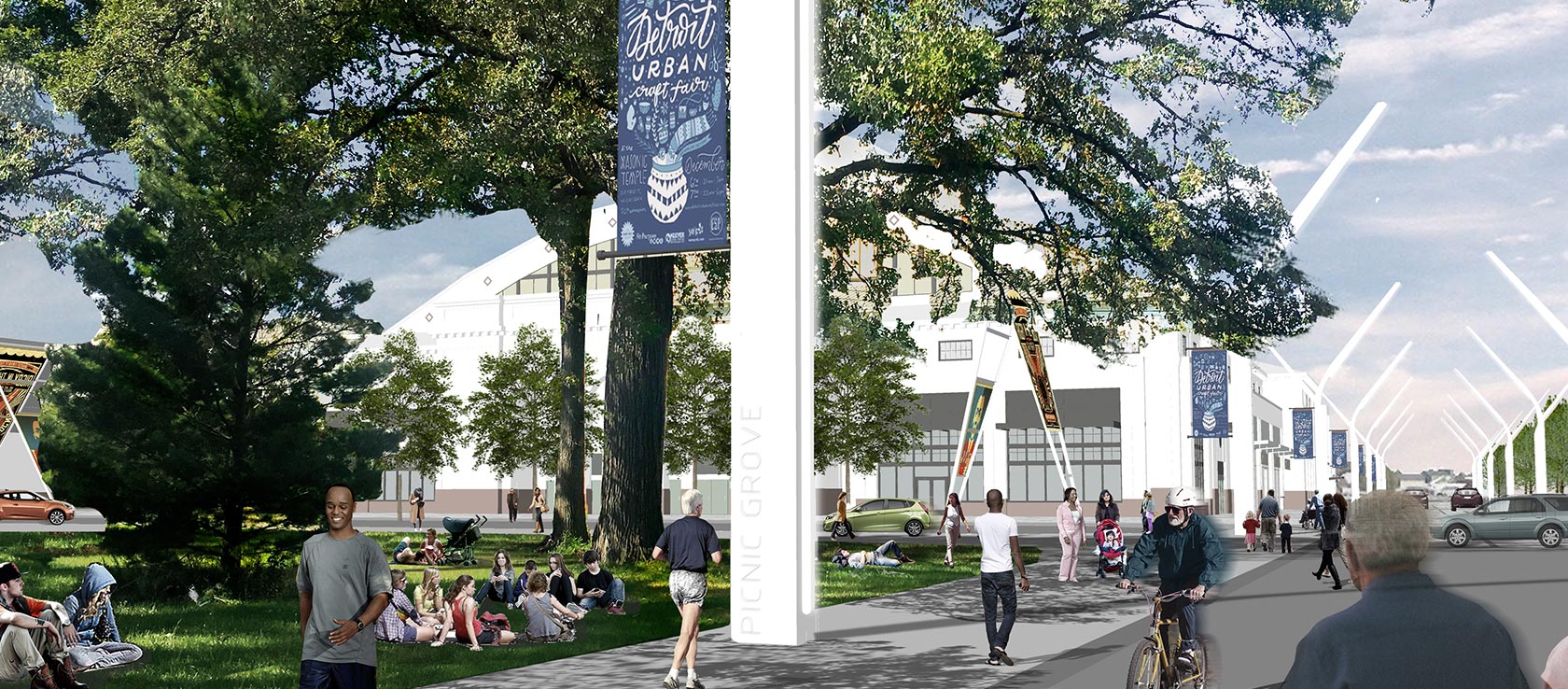Urban Design
State Fairgrounds
160 Acre Landscape Framework
The landscape framework builds upon the history of the site, creating a new set of narratives which connect the storied past to the future.
Project Details
- Location: State Fair & Penrose
- Project Size: 160 Acres
- Developer: Ferguson Development, MAGIC Plus Real Estate
- Architects:
- Hobbs + Black
- Hood Design Studio
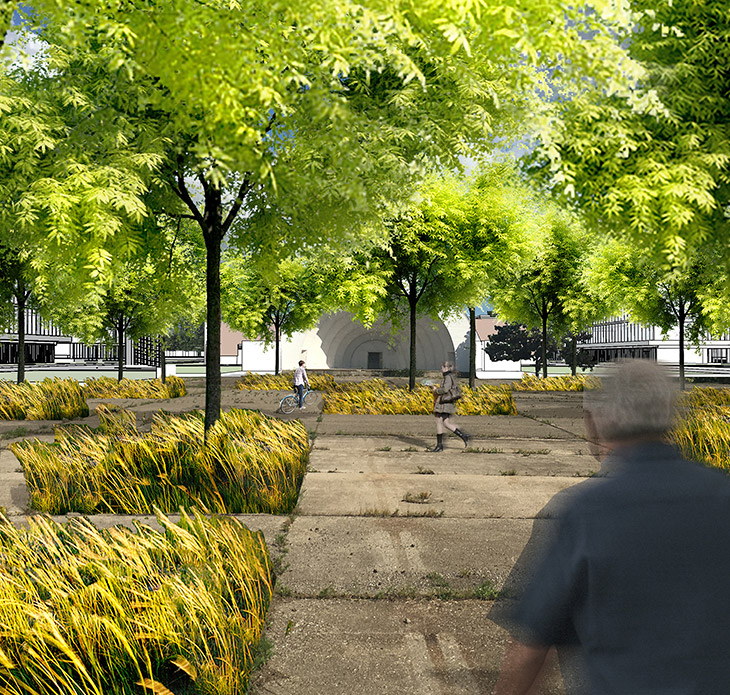
A Culturally Rich Landscape
The 160-acre State Fairgrounds landscape is culturally rich as evidenced in its history - from hosting the longest running state fair in the US, to serving as the site of the first major victory for legendary racehorse Seabiscuit, and for performances by icons ranging from Bob Hope to Duke Ellington and Bob Dylan. The landscape morphology evolved from a critical understanding of the fairground’s cultural assets. The site’s past, present and future were leveraged to create the pattern and programming opportunities for a rich public realm and landscape network. The result is a landscape framework which serves as an armature for development that is unique to its time and place, in an era of uncertain economics. The landscape framework is composed of four components which are appendaged to the historical fairgrounds landscape: The Mall, The Panhandle, Chevrolet Avenue and The Race Track. The existing 1-mile race track is brought back in scale and allows for a series of uses to change over time ranging from a lighted surface, to tree nursery, open space for future community.

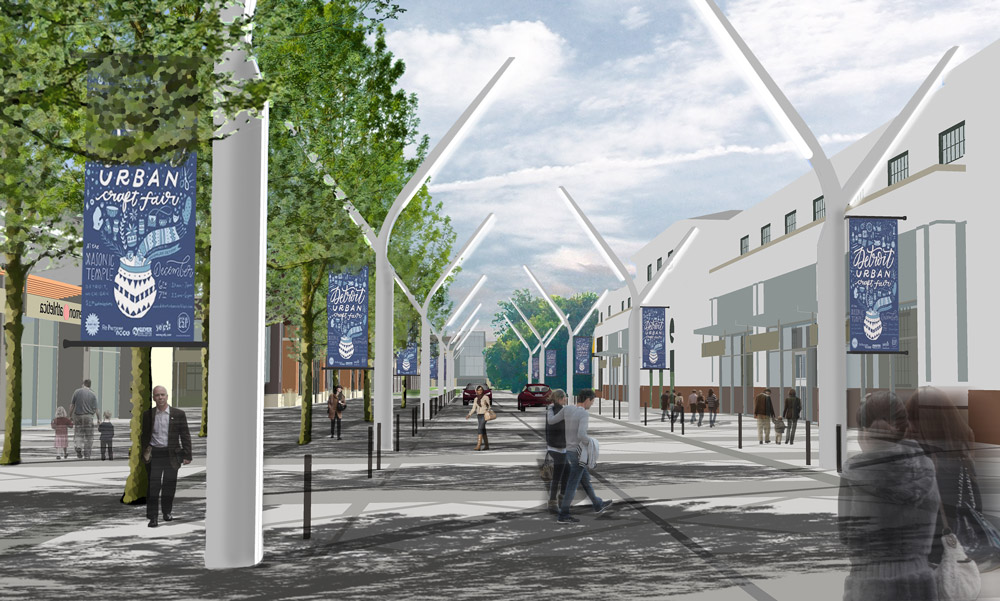
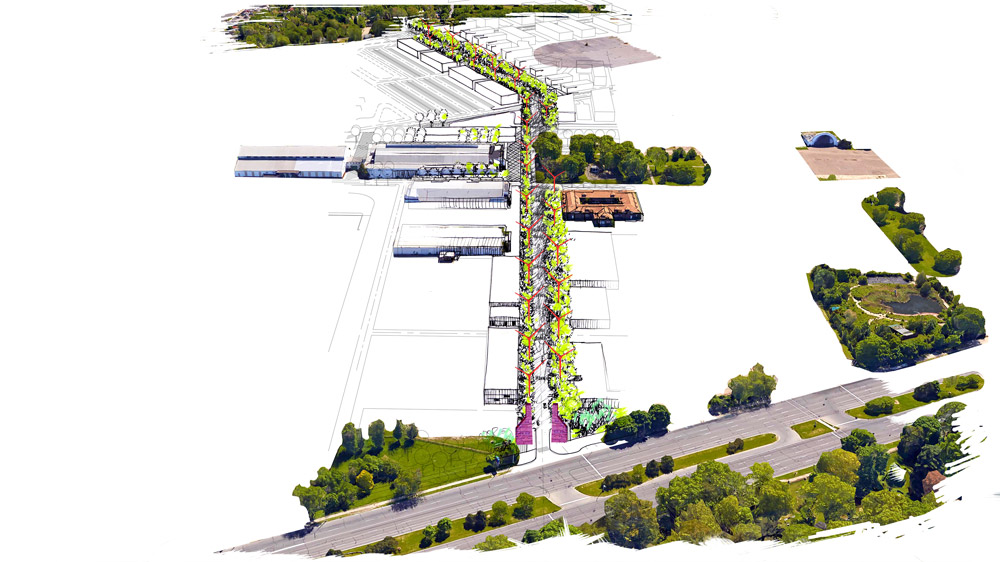
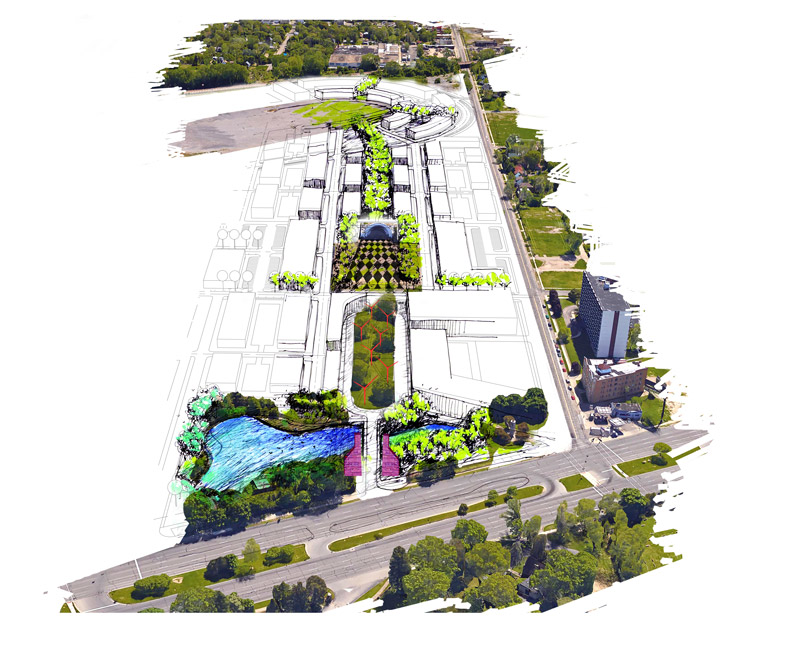
Once used for music performances, the historic music shell is brought back to life. The existing parking surface. New vegetation is cut into the existing surfaces.







